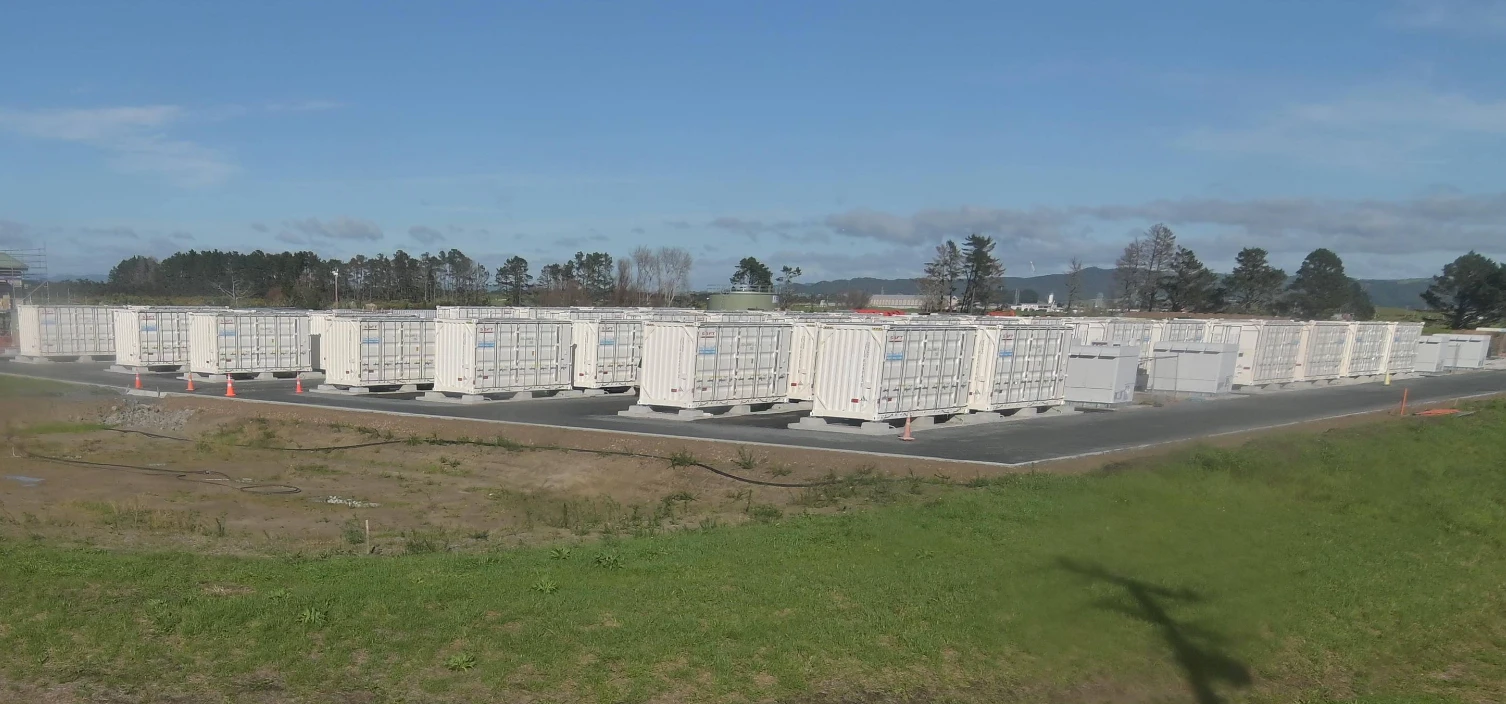It’s using the same technology you use for your phone every day, on an absolutely enormous scale.
The 100 megawatt grid-scale battery that Meridian is building at Ruakākā, near Whāngarei, is larger than two rugby fields. It’ll store enough energy to power roughly 60,000 homes for two hours – and the technology it’s using could revolutionise the way New Zealand uses power.
“For power systems, grid batteries are a fairly new technology, but they’re like any battery at your house – you can charge them and discharge them when you need to,” says Grant Telfar, Meridian Development Investment Advisor.
“Traditionally New Zealand has had a bunch of power stations running on gas and coal to supplement hydro and step up during dry years. As they age, and the push towards 100% renewables gains momentum, they’re being replaced by new sources of renewable generation, particularly wind and solar, but these don’t always produce consistent output when clouds come over or the wind dips.”
That’s where grid-scale batteries like Ruakākā can play a critical role by filling those gaps in supply.
“Essentially, it's the same technology as your cell phone – lithium batteries. You have a whole series of them spread out across a site, and the companies that run them decide when they want to release the power into the power grid. Then they charge them up again, ideally at times when there's a large amount of surplus energy – the sun’s shining, it’s really windy, or there's a lot of water.”
For Meridian it will mean ‘shifting’ power around over the day, making sure that New Zealand has more renewable energy available at the right time, in the right way, in the right areas.
“The obvious example is you don't need as much energy in the middle of the night as you do on a July cold winter evening when people have heaters and lights on. With grid-scale batteries we can charge and store big volumes of electricity when system demand is light and make it available in the morning and evening peaks,” says Grant.
“Ultimately, it’ll allow energy providers like Meridian to manage electricity better. It’ll also mean a more secure power system, with less chance of outages and lower carbon emissions because we can rely more on solar and wind.”
New Zealand has already had an early taste this year of what shortages could mean.
When Transpower warned of possible outages due to an unseasonable cold snap and constrained supply on May 10 this year, proactive efforts by the electricity industry and conservation measures by households and businesses saw New Zealand get by without any outages.
The country managed approximately 260 MW of savings from households and businesses, which was a tremendous effort. Once commissioned later this year, the Ruakākā battery alone will be able to provide put 100 MW (or 200 MWh over two hours) back into the national grid during a similar morning peak.
And it can be deployed quickly.
“As gas and coal-fired stations can take some time to heat up and start generating at their full capacity, an instant supply of stored electricity could make an enormous difference,” says Grant.
In addition to the Ruakākā battery, Meridian is also exploring battery technology at Waiinu and Bunnythorpe, which will provide additional options for storing the energy generated by Meridian’s renewable energy assets.
It’s technology that simply wasn’t possible just a few years ago, and over the next 20 or 30 years, people can expect to see new developments and new technologies coming in and further improving the electrical system.
“It's a fascinating time. And there's lots of challenges there, sure, but there's also lots of new things to think about.
“You can see what electricity does for people in their lives. Ultimately, we're going to have a much more much more interesting power system than we’ve had the past,” says Grant.
